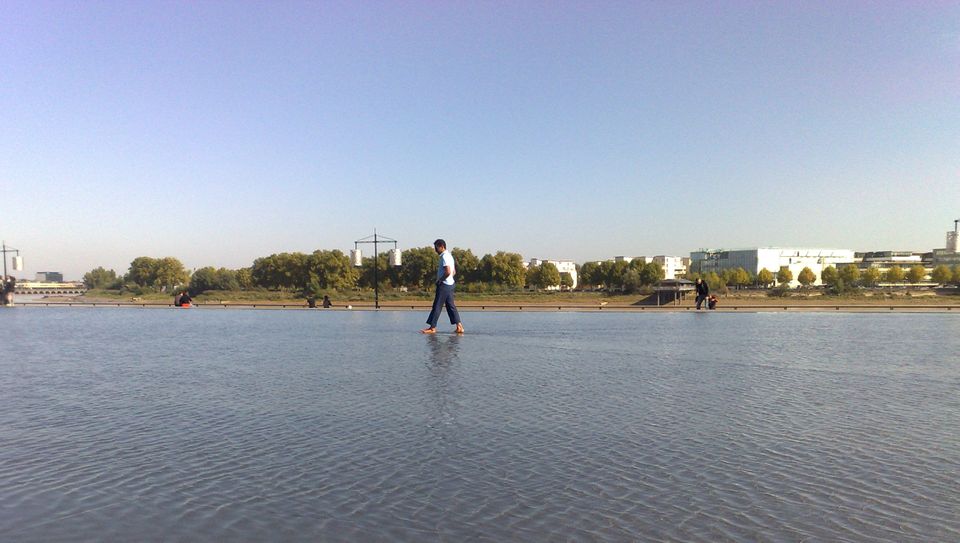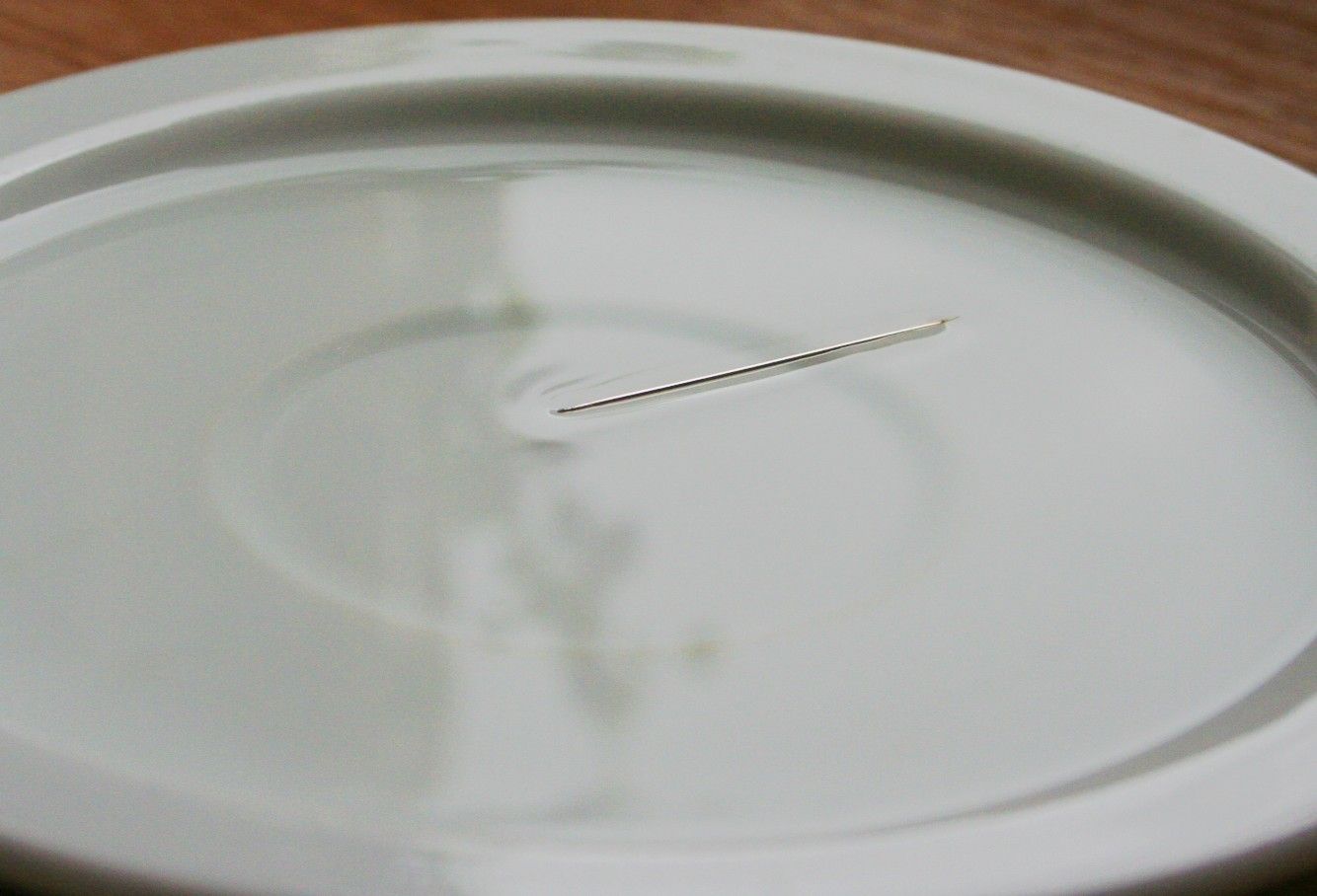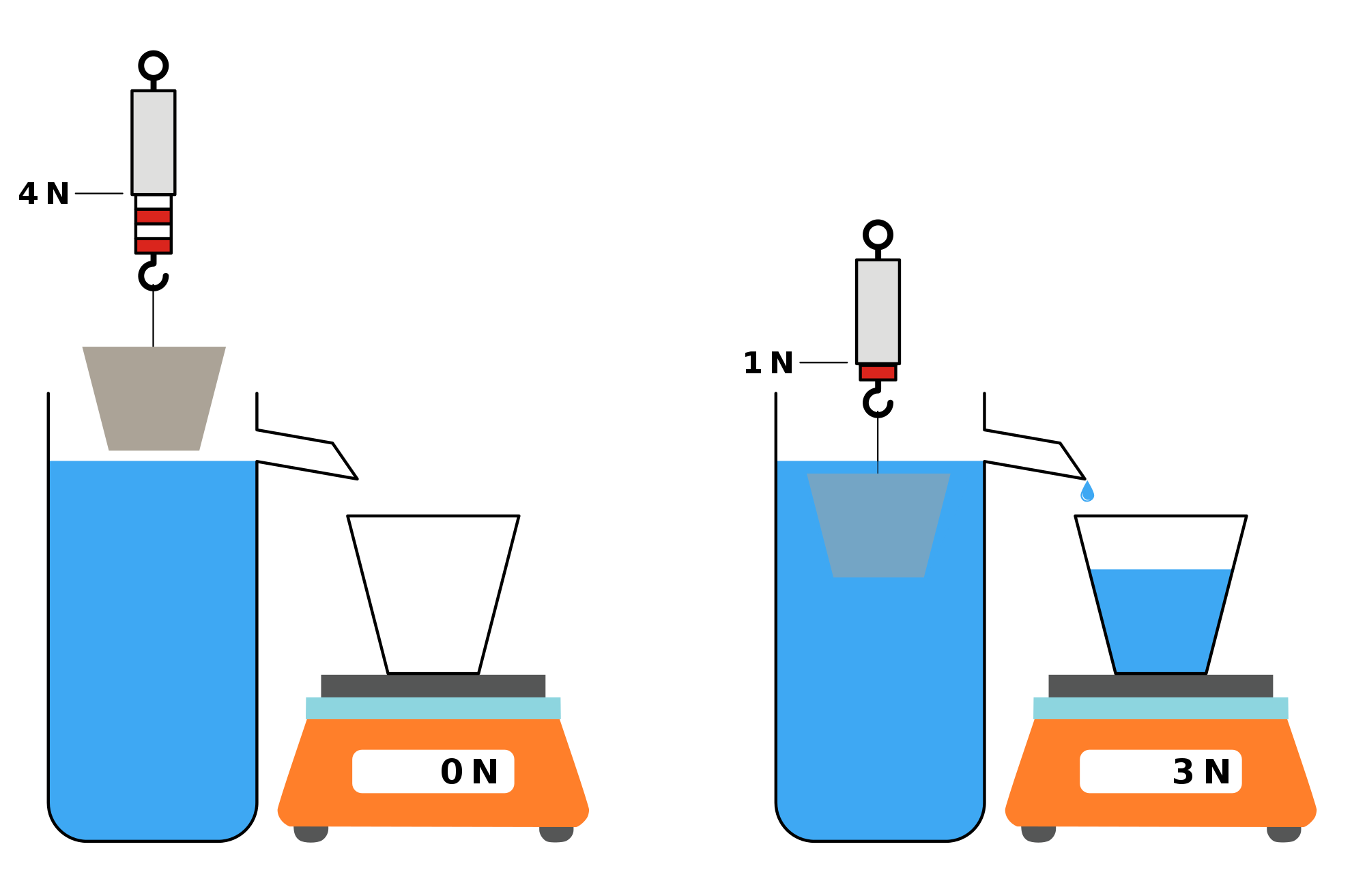Walking on Water

Do you remember tossing objects in water to see if they would float? Floating has to do with the density of water and the density of the object you are chucking into it. The density of an average human is $945-985 \hspace{0.1cm} kg \hspace{0.1cm} m^{-3}$. And the density of seawater is slightly above $1000 \hspace{0.1cm} kg \hspace{0.1cm} m^{-3}$, which means a human can happily float. That's how we swim. But there's a vital difference between walking on water and swimming in water.
The fraction of volume of a substance that shows up above another when dunked in it is given by
$$V_{above} = \frac{d_0 - d}{d_0}$$
$d_0$ is the density of the liquid (here, water) and $d$ is the density of the substance being dunked in (here, a human). The amazing thing about this is that it doesn't depend on mass of the substances. The not-so-amazing thing about this is that just around $0.055$ times your volume will be afloat. So how on Poseidon do you walk on water?
One. Fake It. You could always Photoshop a normal picture of you standing, to a normal picture of you standing on water. But that's not so nice.
Two. Fake It. You can try to create an illusion, to make it seem as if you are walking on water. You can change the substance you are walking on, you can shift the angle from which people see you, you can play tricks on people's minds by influencing what they perceive. But that's not so nice.

Three. Fake It. With Science. Try dropping a needle into water, pin point down. It effortlessly pierces through it and sinks. Now dry it and place it horizontally. It probably will sink (unless you've got really dexterous fingers). To definitely make it float, grab a small piece of absorbent paper (bigger than the needle) and place the needle on top of it. Now place the system gently on water. The paper absorbs the water, becomes heavy (denser) and sinks. But the needle, which is made of metal and whose density is higher than water somehow floats! This is because of a phenomenon called surface tension. This delicate phenomenon is the cause of water rising up against the pull of gravity in plants (but it goes under a different name, capillarity).

If you look closely, you can spot that the water is slightly warped, curved near the needle-water interface. This is because water molecules try to minimize its exposed surface area. If you have a bottle with a narrow lid, you can add a few more drops of water after its full, to get a "membrane" curved upwards. This is because the molecules are pulling the ones outside, so that they don't fall. The needle also causes a disruption in the surface (like the extra drops of water) and hence, there's a tiny force (because of surface tension) which can support its tiny weight. But what about a full human? We gorge on delicacies, and our mass is too huge to be supported by this feeble force. That's not so nice.
Four. Fake It. With Science. How do boats float? They displace water. This is what a naked genius, (almost all of whose ideas have been disproved except, obviously this one and a few others) found about two millennia ago. He had a remarkably scientific mind for people from his time. He made astute observations and most of them made sense with the available tools of the time. The advancement of technology has made us look at his ideas as outdated, but this elegantly simple equation helps boats stay afloat.
$$B = W$$
For those of you who think that's too simple, let me deconstruct it a bit. $B$ is the buoyant force, the upthrust experienced by an object in water. $W$ is the weight of the volume of water displaced by immersing the substance.

For boats, only a part of their whole body is immersed under water, only a certain fraction of their hull. To find that out, we'll have to balance its weight with the forces exerted by water. But wait a minute... That gives us the first equation in this article. So no matter how much you cry over Archimedes' grave, there's only 5.5% of your body volume he can levitate above water. That's not so nice.
Five. Fake It. With Science. Allow me to creep you out with this:

This bad boi right here, he can run on water. Not walk, but run (Walking is harder, in case you didn't get that). How does it do it? Well, it slaps the water with its foot. Then it pushes it down into the water very quickly. This creates an air cavity above its foot. Before water can fill that cavity, it nicks its foot away to avoid water drag, which will not only decrease its velocity, but also drag it under. During this full action, which is one step the upward impulse on the lizard by the water should match gravity's downward pull. This is managed by its special webbed feet which help it retain that air cavity when it needs it and gives it the ability to slap the water hard enough to give it an upward impulse. These lizards are very light-weight weighing (rather, containing) only around 150 grams. They flit across the surface of water at a speed of $6 \hspace{0.1cm} m \hspace{0.1cm} s^{-1}$, which is impressive for such a tiny creature. Some lizards can sustain these speeds for almost 100 m. These lizards would finish a normal 100 m sprint on water in about 20 seconds, which is quite respectable considering its teeny stride. Shame on us with our humongous stride advantage. So, since we are too slow to do this, let's call Usain Bolt to do it for us. I have no clue how heavy he is, so I'll take that as the mass of an average human, around 80 kg. What do I tell him to do? I tell him to wear webbed shoes to help him slap the water properly. Then, I tell him to run just three times faster than he ran in Berlin in 2009. But what does he tell me? That's not so nice.
